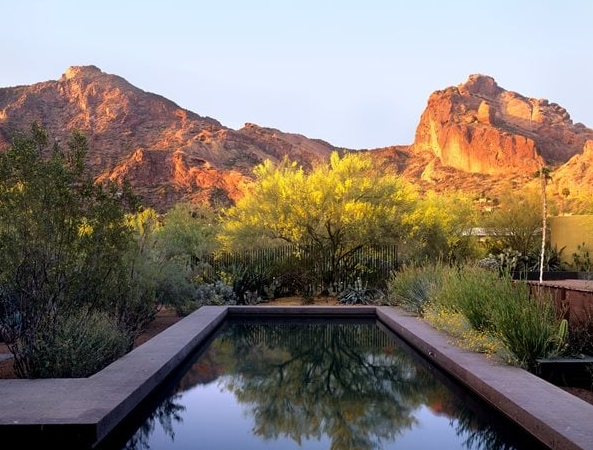Desert landscape architecture is both an art form and a practical necessity in regions where water is scarce and heat is intense. As more people look to live sustainably and harmoniously with their environment, understanding the principles of desert landscape design becomes increasingly relevant. This article explores key aspects of desert landscape architecture, from native plants to sustainable practices, providing insight into creating beautiful and functional outdoor spaces in arid climates.
Designing with Native Plants
One of the cornerstones of desert landscape architecture is the use of native plants. These species are adapted to the local climate and soil conditions, requiring minimal water and maintenance. By incorporating plants such as succulents, cacti, and desert wildflowers, architects can create vibrant landscapes that thrive in harsh conditions. Additionally, native plants contribute to biodiversity, providing habitat for local wildlife and helping to maintain the ecological balance. Choosing the right plants not only enhances the beauty of a landscape but also promotes environmental sustainability.
Water Conservation Strategies
In desert regions, water is often the most precious resource. Effective water conservation strategies are essential for maintaining lush landscapes without depleting local water supplies. Techniques such as xeriscaping reduce water use by focusing on drought-resistant plants and utilizing efficient irrigation systems. Rainwater harvesting and greywater reuse can also be integrated into landscape design, allowing for sustainable water management. By implementing these strategies, homeowners and designers can create appealing outdoor spaces while minimizing their environmental impact.
Creating Shade and Cooling Spaces
In the intense heat of the desert sun, creating shaded areas and cool spaces is vital for enjoying outdoor living. Design features such as pergolas, shade sails, and strategically placed trees can provide relief from the sun and make outdoor areas more comfortable. Additionally, incorporating water features like ponds or fountains can help reduce surrounding temperatures through evaporation, creating a more enjoyable environment. Thoughtfully designed outdoor spaces that prioritize comfort can transform the way people interact with their landscapes, encouraging them to spend more time outdoors despite the heat.
In conclusion, desert landscape architecture is about more than just aesthetics; it incorporates environmental harmony and sustainability. By focusing on native plants, water conservation, and the creation of shaded spaces, designers can craft landscapes that not only survive but flourish in arid climates. For those interested in learning more about this fascinating field, consider exploring local landscape architecture projects or even taking a class on sustainable design techniques to further your understanding and appreciation of desert landscapes. Embrace the beauty of the desert and start designing your own oasis today!

